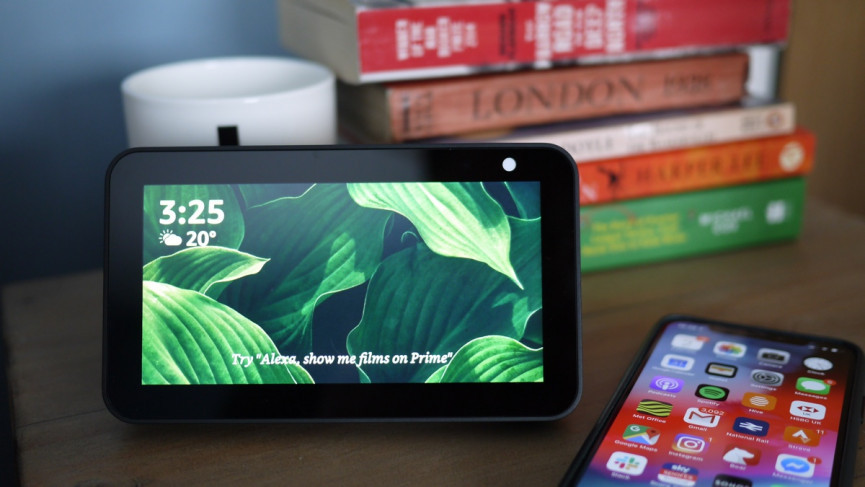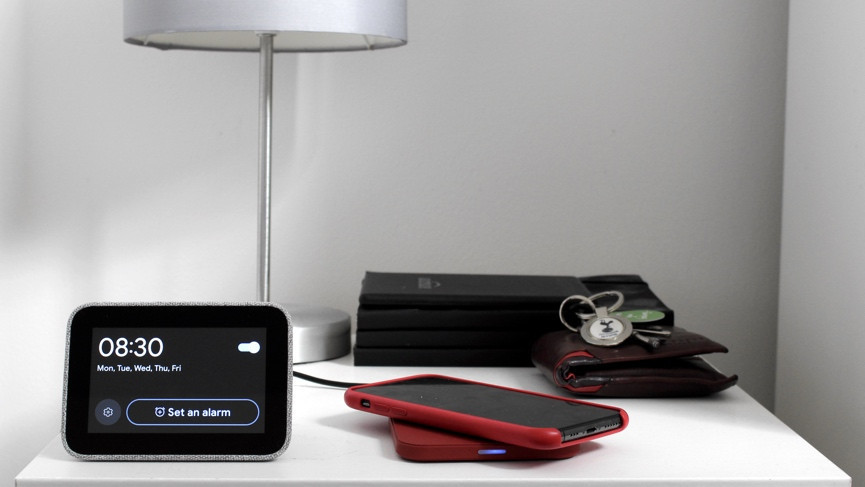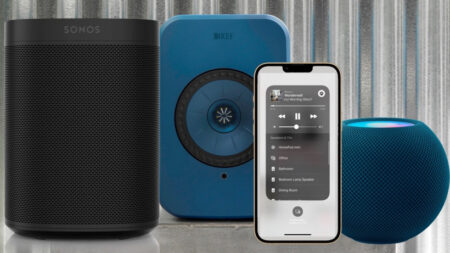These smart digital connected smart speaker clocks will wake you up in style
If we had to choose one place our smart speakers truly excel, it’s as a bedside smart alarm clock.
Setting alarms quickly with a command, getting woken with personalised music playlists, radio stations or tailored news reports is a real crowd pleaser – and that’s just scratching the surface.
Smart alarm clocks are also brilliant for getting to sleep, with audio meditations and sleep sounds readily available, and controllable with sleep timers.
Plus things like Alexa Routines and Google Assistant Routines make it easy to pair devices such as connected bulbs and coffee machines to your morning alarm for a truly smart start to the day.
Below you’ll find our picks of the options out there right now.
- How to use Google Home and Assistant as a smart alarm clock
- How to use your Amazon Echo with Alexa as the perfect alarm clock
Google Nest Hub (2nd-gen)
£89.99, store.google.com

The 2nd-gen Nest Hub is the first redesign of the Google’s flagship smart display since it was launched three years ago.
Looking much the same as the original, the big change is under-the-hood, with increased speed and performance, plus a brand new feature that will thrill many and – conversely – spawn yawns from those who don’t give a hoot about quantified self: sleep sensing thanks to Google’s Soli technology.
It’s a completely contactless experience; just angle the screen towards where you will sleep and the Soli chip will watch your chest rise and fall and monitor your movement.
The built-in microphones, ambient light sensor, and temperature sensor will keep an eye and ear out for disturbances like coughing and snoring, and light and temperature changes.
Combining its metrics – duration of sleep and quality of sleep – with tracking your schedule, its smart alarm clock features and smart home integrations, the Nest Hub provides a pretty unique all-in-one sleep aid device. Something none of the other sleep tracking devices we’ve used do.
Read our full Nest Hub 2 review
Amazon Echo Show 5
£59.99, Amazon

The smallest member of Amazon’s Show family is perfect for placing on a bedside table. If you’re used to the 10-inch Echo Show, like us you’ll probably be taken aback by just how much smaller this is. Yet it packs a lot in a tiny package: a 4W speaker that’s surprisingly good, a built-in camera and even a 3.5mm jack.
Before you worry about that built-in camera, there’s a physical shutter that slides across the lens and kills the power, ensuring total video privacy. That’s important if you’re going to use this as a bedside clock, and its inclusion suggests Amazon expects people to.
Read this: The best Echo Show and Spot skills
The display is vibrant but will adjust to its surroundings, dimming when the lights go off. Again, an essential requirement for a bedside companion.
And of course you’ve got built-in mics for summoning Alexa, whether it’s to set a morning alarm, turn off the house lights, or read you a bedtime audiobook. Where we’ve found Alexa a little deaf when using the Echo Show 5 in other parts of the house, it’s close enough by the bed to hear your half-awake mumbles to play the news or announce the weather forecast.
Its diminutive size is much nicer to have in your home than the full-size Show, and the new control panels means there are more ways to use Alexa. It’s a great balance of discreet integration, top control and better privacy that makes it highly recommendable for smart homes.
Read our full Amazon Echo Show 5 review
Lenovo Smart Clock
£79.99, lenovo.com

More of a Google user? Echo Show 5 still too big for you? Meet the smallest member of the wake-up gang, the Lenovo Smart Clock. Designed purely as a bedside clock, the Lenovo is a 4-inch display ensconced in a fabric-coated speaker.
There’s no camera here, and the sound quality is less powerful than the Echo Show 5. It’s just a 1.5-inch speaker with 3W output. It does the job, but you’re not going to be playing any music through this unless you hate your ears.
The ambient light sensor is really good at dimming the screen in the dark and preventing the Lenovo from being a distraction while you sleep. It runs on the same Android Things platform as other third-party Assistant speakers, but it’s more stripped down here. While some of this is for the better, we miss Home View, the smart home master control panel you’ll find on other Google smart displays. This leaves voice commands as the primary interaction method.
There are no photos either, but the screen is so small we’re not sure many people will mind. There are a few different clock faces to choose from, and we also love the built-in USB charging point, which means this can juice up your phone overnight – so you can get rid of the bedside smartphone charger.
Lenovo’s clock achieves exactly what it sets out to do, and that’s both an achievement and a limitation. At the end of the day, this is still just an alarm clock that’s designed to sit on your bedside table. And though there are a couple of neat design quirks – like tapping to stop the alarm and a USB charger for your phone – that will endear it to some, those with other Assistant-compatible devices may be left wanting more smart display features.
Check out the full Lenovo Smart Clock review
Amazon Echo Dot with Clock (2nd-gen)

£59.99, Amazon
The options above are all well and good, but you might not actually want a display in your bedroom – but still have a need for digital assistant skills and features.
Step forward the Echo Dot with Clock; which has an LED clock display behind the mesh grille of the speaker. It’s nicely blurred by that barrier – it’s still entirely clear to the eye – but has a fuzzy quality that makes it feel embedded in the fabric.
It’s permanently on by default, showing the time to the minute, but can display other things depending on what you ask it. For example, you can ask Alexa about the weather it will show the temperature; or if you set a timer, it will display the timer counting down. It’ll also show you the current brightness or audio level of the Dot with Clock if you ask for a change to either.
As a dedicated bedside clock it works brilliantly. It has a light sensor built in, which can dim the display to suit the light in the room. At night it goes down to really low levels, easily enough for more sensitive sleepers to have no issue.
You can also tap anywhere on the top of the Dot with Clock for a snooze, not just a specific snooze button, to delay an alarm, so long as the speaker’s not muted – that’s a nice feature, making it easier to silence your alarms.





